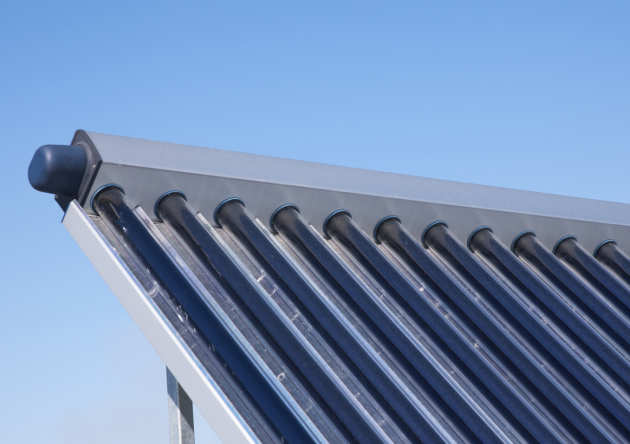Topics: Mitigation
Type: Briefing paper
Publication date: May 2017
Download
Summary
Authors: Dr Alba Ramos, Ilaria Guarracino, Dr Alexander Mellor, Dr Diego Alonso-Álvarez, Professor Peter Childs, Dr Nicholas J. Ekins-daukes, Dr Christos N. Markides

This paper looks at the barriers and opportunities for the mass deployment of solar-thermal technologies and offers a vision for the future of solarthermal systems.
Headlines
- Heat constitutes about half of total global energy demand. Solar heat offers key advantages over other renewable sources for meeting this demand through distributed, integrated systems.
- Solar heat is a mature sustainable energy technology capable of mass deployment. There is significant scope for increasing the installed solar heat capacity in Europe. Only a few European countries are close to reaching the EU target of 1 m2 of solar-thermal installations per person.
- One key challenge for the further development of the solar-thermal market arises from issues related to the intermittency of the solar resource, and the requirement for storage and/or backup systems. The former increases investment costs and limits adaptability.
- An analysis of EU countries with good market development, suggests that obligation schemes are the best policy option for maximising installations.
- These do not present a direct cost to the public budget, and determine the growth of the local industry in the long term.
- Solar-thermal collectors can be combined with photovoltaic (PV) modules to produce hybrid PV-thermal (PV-T) collectors. These can deliver both heat and electricity simultaneously from the same installed area and at a higher overall efficiency compared to individual solar-thermal and PV panels installed separately. Hybrid PV-T technology provides a particularly promising solution when roof space is limited or when heat and electricity are required at the same time.
Introduction
The energy sector is in transition worldwide because of increasing demand for energy; significantly fluctuating oil prices; stronger desire for energy supply security and independence; and in response to sustainability, conservation and environmental considerations. In 1992, the Rio Convention on Climate Change established a framework for actions aimed at reducing fossil-fuel consumption and limiting associated emissions. In 2015, over 190 countries signed a legally-binding agreement at the Paris Climate Conference with the intention of keeping the rise in the average global temperature below 2 °C. The mass deployment of renewable and low-carbon energy technologies has the potential to make important contributions towards these goals.
Solar energy has the potential to provide a significant proportion of the renewable energy required to meet these and other national and international targets and obligations. Sunlight is available without geographical restrictions and supply-chain limitations. Considering that nearly 50% of the global energy consumption is finally used for heating purposes and with 70% of the world’s population projected to live in cities by 2060, solar heat is poised to play a key role in delivering a clean and sustainable future energy system. Of interest are small-scale distributed solar installations, which are affordable and readily integrated into cities.
This paper highlights the potential for existing and emerging solar-thermal and hybrid photovoltaic-thermal (PV-T) systems in meeting growing global demand for renewable and sustainable thermal energy (heat). The paper also outlines the barriers and opportunities for the mass deployment of solar-thermal technologies and offers a vision for the future of solarthermal systems.
Download: Solar-Thermal and Hybrid Photovoltaic-Thermal Systems for Renewable Heating
View publications by:
Topic
Climate Science
Earth and Life Sciences
Energy and Low-Carbon Futures
Resources and Pollution
Economics and Finance
Health
View all publications and browse by year
Publication type
Briefing papers and Briefing notes
Grantham Institute Outlooks
Evidence & submission papers
Infographics
Institute reports and analytics notes
Grantham notes
Collaborative publications
Discussion papers
Institute event overviews
Working papers